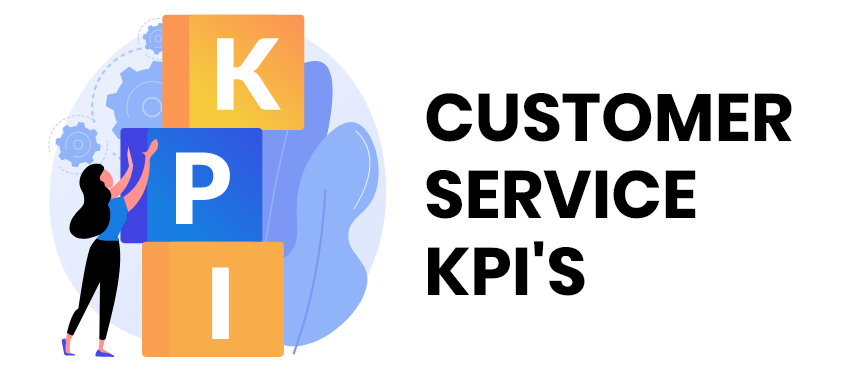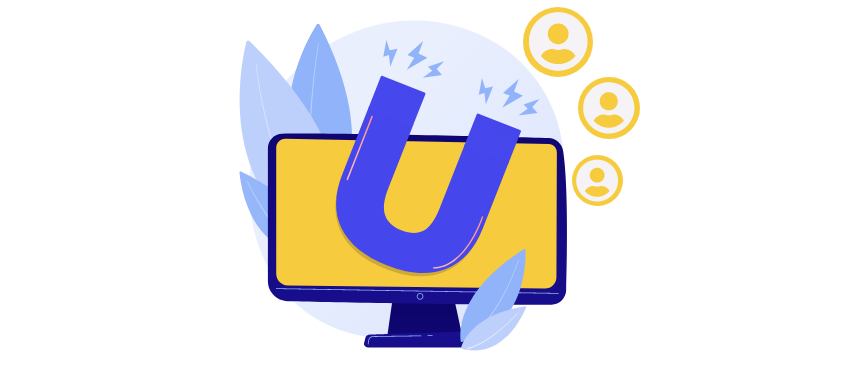Top 10 customer service KPIs and metrics

Top 10 customer service KPIs and metrics
Let’s say you’ve ordered three cartons of toilet paper from Amazon. The cost: $88.77. Then you’re charged $7,455 for the delivery. Yikes! You’d think that’s not possible, but that’s exactly what happened to Barbara Carroll from Georgia, USA, as reported by USAtoday.
It took more than two months, but Barbara finally got her amount refunded after a battle that stretched her patience thin.
Everyone might not agree with this oft-quoted phrase, “The customer is always right!” but in this case, the customer was beyond right; she was wronged!
It is always easier to break a relationship than build it; hence why customer service is a cornerstone of every successful business.
And this is also why you should define customer service KPIs and encourage your employees to stick to them. Customer satisfaction KPIs and metrics also tell a lot about a business; they tell us how an organization conducts business with its customers.
This brings us to our topic for the day: What are customer service KPIs and how do we measure them? Let’s get into it without much further ado.
What are customer service KPIs?
Customer service KPIs are performance indicators used by customer support or customer service teams to track, monitor, and enhance customer relations by closely monitoring every interaction point with customers to improve customer experience.
Customer support is a discipline that thrives on human interactions. It’s necessary to have KPIs and metrics to measure how well your team performs. Elevating customer support to exceptional support is possible only when you have the numbers, and in this article, we are going to break down what you need to track to stay on top.
Here’s a list of top 10 customer service KPIs that every business needs to know and monitor closely.
- First Response Time (FRT)
- First Call Resolution rate (FCR)
- Average Handle Time (AHT)
- Average resolution Time (ART)
- Ticket volumes
- Customer churn rate
- Customer retention rate
- Customer Satisfaction (CSAT) score
- Net Promoter Score (NPS)
- Customer Effort Score (CES)
Key performance indicators (KPIs) for customer service
First Response Time (FRT)
First Response Time (FRT) is an indicator that shows how long your agents take to make the first response to your customers.
FRT is a critical metric to track because it is a way of acknowledging the customer. The longer the FRT, the higher the chance of customers switching channels or altogether to a different business. It also helps you see if you have enough agents to deal with the volume.
FRTs are different for each channel. For example, a phone channel may have an FRT in seconds, while a text-based communication channel like email may have a higher FRT. Your goal is to keep your FRT as short as possible because this assures the customers that someone can look into their requirements.
Best practices:
The industry standard for the FRT for each channel is:
| Channel | Good | Better | Best |
| Phone | 3 minutes or less | 1 minute or less | 20 seconds or less |
| 12 hours or less | 4 hours or less | 1 hour or less | |
| Social media | 2 hours or lee | 1 hour or less | 15 minutes or less |
| Live chat | 1 hour or less | 5 minutes or less | 1 minute or less |
Source: Zendesk, Customer experience trends report, 2020
First Contact Resolution (FCR)
First Contact Resolution is defined as your agents’ ability to resolve your customers’ query in the first interaction itself. It measures the efficiency of your team to resolve an issue in the first call.
It is one of the most important customer service performance metrics to track. It indicates how well your agents understand your customers’ problems and resolve them in one go without needing to transfer or return the call. The higher your FCR, the happier and more satisfied your customers will be.
While FRT indicates speed, FCR indicates resourcefulness and higher satisfaction. Both are essential for providing a happy customer experience. Hence, FRT+FCR, FTW (For the Win 😉 )
Best Practices:
- Train your agents to handle the most common scenarios, and enable them to use their skills and instincts to handle the ones that they haven’t come across
- Provide live call scripts to handle known issues
Average Handle Time (AHT)
Average Handle Time is the total time taken for the interaction, starting from the wait time, hold time, and interaction time (or the time taken from the opening of a support email to when the agent clicks send).
| Average Handle Time = (Wait time + Hold time + Interaction time) / Total number of calls/emails |
Providing unbeatable customer service lies in the little details. Shaving a few seconds off the total handle time adds up to substantial time savings. The goal is to reduce the AHT over time, but that shouldn’t come at the cost of quality. As a manager, you should look for methods to optimize and streamline the existing process to reduce the overall wait time and hold time to bring down the AHT.
Best practices:
- Optimize routing methods to reduce the overall wait time
- Provide training on standard hardware and software issues to enable your agents to handle them effectively
- Build a comprehensive self-help portal to enable customers to solve their issues, like a robust KB.
Average Resolution Time (ART)
Average Resolution Time is the average time taken by agents to resolve a customer issue completely.
| Average Resolution Time (ART) = Sum of time taken to resolve each issue / total number of issues resolved |
A short resolution time indicates effective support, which in turn contributes to better customer satisfaction. Every customer expects a quick and consistent support experience, and providing that in the shortest time possible will lead to higher CSAT.
Best practices:
- Link to knowledge base articles within replies to help customers resolve their issues on their own
- Foresee what other underlying issues may confuse your customers and provide materials to resolve the same
Ticket Volume
Ticket volume is the total number of support-related conversations in an agent’s inbox.
Tracking this metric will give you an overall idea of how many customers reach out to you on a day-to-day basis and what kind of issues they’re looking to solve. You can track this over time to check for trends and see how the product or support changes affect this number. Ideally, this number should be as low as possible; no tickets to solve indicate that your customers are not facing any issues and are happy with how the product works.
Best Practices:
- Have a well-built KB to manage the ticket volume.
- Enable customers to solve little issues on their own with self-help articles
Customer churn rate
Customer churn rate is the percentage that indicates how many customers have stopped using your product/services.
Customer churn rate gives you the percentage of lost customers within a defined period. Following the churn rate is critical because, in general, it is much less expensive to retain existing customers than it is to acquire new ones.
Best practices:
For a SaaS company that targets the SMB segment, 3-5% monthly is an acceptable churn rate. Track churn trends to see what makes customers drop off and improve your product/service based on their inputs.
Customer retention rate
Customer retention rate is the percentage of customers who have continuously used your product/service over a defined period.
| Customer retention rate = ((CE – CN) / CS) x 100, where CE = no. of customers at the end of a particular period CN = no. of new customers acquired during that period CS = no. of customers at the beginning of that period |
Customer loyalty plays a fundamental role in any business’s success as it contributes directly to your CSAT and NPS scores. Businesses should focus more on customer retention rather than acquisition.
Churn rate and retention rates are interconnected: The higher the retention, the lower the churn rate. For example, if your churn rate is 15% over a year, that means that 85% of customers stayed with your company. Thus the retention rate is 85%.
Best practices:
A growing retention rate is what every business should aim for. Keeping that in mind, here’s what you can do:
- Collect feedback and fix problems
- Acquire customers that match your product size
- Increase product adoption through onboarding
Customer Satisfaction Score (CSAT)
Customer satisfaction score is the number that says whether a customer experience was good or bad.
| % of satisfied customers = (No. of customers who responded positively / Total no. of customers surveyed) x 100 |
You can gather this number by presenting a CSAT survey at the end of every resolution to gather customer sentiment.
Angry customers are more vocal in general, which may tend to skew your CSAT score. Encourage your happy customers to complete the happiness survey to get an accurate measure of your CSAT score.
Best practices:
An 80% CSAT score is considered excellent in the customer service domain. You can ask CSAT questions like:
- How satisfied were you with our product/service? (Answers can be a slider bar on a scale of 5)
- Were you satisfied with our product/service? (Yes/No)
Your CSAT scale can include numbers, smiley faces, colour variations like red/green to indicate sentiment, etc.
Net Promoter Score (NPS)
Net Promoter Score is the percentage of customers indicating their willingness to recommend a product/service they’ve just tried to a friend or colleague.
This score is widely regarded as a tool to measure loyalty to a product/service/brand. The NPS helps you gauge how likely your customers are to refer you to their friends and relatives. NPS scores are calculated from questions that are targeted more towards intention rather than emotion. While CSAT focuses on customer emotion/sentiment, NPS is targeted more towards a customer’s willingness to remain loyal to your business/brand.
Customer responses are usually categorized into:
Promoters (9-10) – They’ll continue buying from you and refer you to their contacts
Passives (7-8) – They’re satisfied customers but may not actively promote your business
Detractors (0-6) – Unsatisfied customers who negatively impact your brand through reviews/word of mouth
Best practices:
You can find out your NPS score with this key question, where users can slide their responses on a scale of 1-10: “How likely are you to recommend this product/service to a friend?”
Customer Effort Score (CES)
Customer Effort Score is a customer experience metric that measures how easy it is for a customer to do business with you. This can be determined through a CES survey, just like it is done for CSAT and NPS scores.
It helps you understand whether your product/service is easy to use. A high CES score will have your customers complaining about how bulky your product/service is, and they may even end up churning. The CES is directly linked to customer satisfaction, and hence it is necessary to keep this metric as low as possible.
Calculating the CES usually involves sending out a survey question just like CSAT and NPS, and customers will rate you on a scale of 1-5.
Best practices:
Ask questions like, “How much do you agree with the following?”
- The company’s service made it easy for me to make a purchase
- The company’s website made shopping easy for me
- The company’s product helped me resolve my issue easily
So why is it important to measure KPIs?
Measuring customer satisfaction metrics provide a more in-depth insight into how happy customers are when dealing with your business. Support leads can have a set of KPIs and measure them to help your team adhere to the performance standards and provide a happy customer experience.
But, tracking metrics alone won’t be of much help. It’s essential to track these metrics and derive actionable items from them to build a customer service experience that works. It is necessary to set KPIs based on every customer touchpoint to track and improve service across all these touchpoints.










